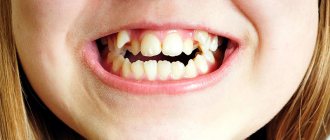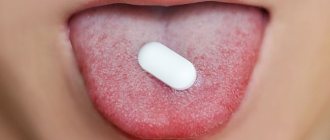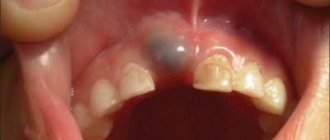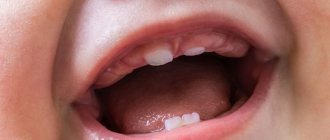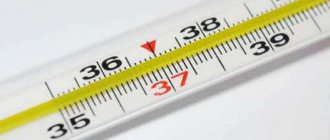What to do if teeth do not erupt “on time”?
Nothing to do. As stated earlier, the timing is quite relative and not strict data. There is such a thing as the individual characteristics of a child. Plus neonatal indicators, physical constitution, etc. Thus, the timing of the appearance of teeth in your child is normal for him. The same applies to permanent teeth.
The later the teeth appear, the healthier they will be?
Is not a fact. The timing of teething does not affect their “quality”.
What sedatives can be used during teething? Do they influence the process itself?
No, such drugs do not affect the process of teeth formation and, as a rule, have no side effects. For children with allergies, there is a sedative called Doctor Baby that does not contain lidocaine. Almost all gels contain lidocaine and inert fillers (cooling menthol, astringents and flavoring additives). You can use Dentinox, Kalgel (be careful with diathesis, because it is sweet), Kamistad (very effective, but you need to know when to stop), Mundizal, Cholisal, Solcoseryl dental paste (especially good in the presence of wounds or ulcers).
How often should such drugs be used?
Soothing gels are not antibiotics and do not need to be used according to a specific regimen. If the child is in pain, apply it, but if everything is calm, don’t. But it’s better not to use it more than 3-4 times a day and for longer than 3 days in a row.
How to help your child when teething
Teething in children, or more correctly, teething, is quite often accompanied by various changes in the behavior and well-being of the baby, which is very frightening for parents who are not prepared for such a development of events. What dental symptoms in children should alert adults to what to do?
Helping your baby while teething
If, when teething, the baby is simply worried, he is constantly salivating, he sucks his fingers or tries to scratch his gums with something, it is quite simple to help the baby:
- Get some very soft wipes and constantly wipe away any saliva. This will protect your baby from facial skin irritation. At bedtime, place a napkin under your baby's head to absorb any involuntary saliva.
- Be sure to buy high-quality special silicone toys for developing gums - teethers, or special rings with liquid so that the baby can chew on them. The liquid makes the rings softer and pleasantly cools the gums (the rings can be stored in the refrigerator). Don’t save money - take only branded, certified products. After all, this is the health of your beloved child.
- Periodically massage the gums using a special nozzle, or just with your finger (wash your hands thoroughly, keep your nails short, with neatly trimmed edges), maybe with a moistened gauze swab. This procedure will also prevent the occurrence of stomatitis (“Stomatitis in infants - types, causes, symptoms”).
- Putting your baby to your breast more often is a great way to soothe him and relieve itchy gums.
- Some kids enjoy sucking and gnawing on bagels, a crust of bread, an apple without the peel - suggest it, it’s a good distraction.
- It is strictly forbidden to lubricate the gums with various medications without a doctor’s prescription, or to give the baby pills and mixtures on your own. Only a specialist - a pediatrician or pediatric dentist - can prescribe an ointment or gel to relieve pain, and a preliminary test for allergic reactions must be carried out. Although ointments and gels with lidocaine (Kamistad, Kalgel) are sold without a prescription, you should not lubricate the baby’s gums without checking, because if the baby is allergic to lidocaine, the baby may experience anaphylactic shock. For allergy sufferers, the doctor prescribes a special ointment called Baby Doctor or others.
- Try to distract your child, spend more time playing with him, and going for walks.
When should you see a doctor?
You should definitely consult a pediatrician if the following signs of teething are observed in your child:
- heat;
- vomit;
- diarrhea;
- runny nose;
- cough;
- skin rashes;
- convulsions;
- constant drowsiness;
- prolonged irritability, moodiness.
In any case, such symptoms should be a reason to consult a doctor. Often parents, on the advice of grandmothers, attribute everything to the fact that the child is teething; fever, they say, happens to all children. But no. Most children tolerate tooth growth without fever. And elevated temperature is a sign of most diseases. Therefore, you can miss the onset of some disease or pathological process that coincides with the period of teething.
Why does the temperature appear? The fact is that at the site where the tooth erupts, the gums swell, which is associated with the raising of the tooth and an increased influx of biologically active substances. The body reacts to this with a protective increase in temperature - to prevent infection of the gum cut by sharp edges. Dental fever lasts for one to two days. If the child tolerates this easily, is not predisposed to convulsions, and the doctor does not find other reasons for the increase in temperature, then it is not necessary to bring it down to 38 degrees. In case of a longer increase in temperature, examination of the baby and consultation with a doctor are necessary.
should be wary of vomiting during teething, unless other causes of this condition are excluded. All changes in the gastrointestinal tract have a fairly simple explanation: during this period, a lot of saliva is produced and the child constantly swallows it frequently, which causes increased secretion of gastric juice and vomiting (rare), as well as increased intestinal motility, which means diarrhea in a child during teething. Diarrhea occurs rarely (2-3 times a day), the discharge is watery and lasts no longer than 2 days. If the diarrhea is more frequent, prolonged, streaked with blood, with an increase in temperature and refusal to eat, immediately seek help from a medical facility - it could be an intestinal infection that the baby contracted when scratching his gums. In this case, treatment in a hospital is indicated, since the patient’s condition can deteriorate very quickly due to dehydration.
The accumulation of saliva in the throat often causes a wet cough, and its flow into the nasal passages causes a runny, watery runny nose. These conditions do not require treatment and disappear without a trace in 2-3 days. But only a pediatrician can assess the causes and severity of these pathological processes. In order not to confuse real illnesses with complicated conditions during teething, or in any violation of the baby’s behavior or health, consult a doctor. It’s better to be safe a hundred times than to regret a missed opportunity once.
Is it possible to speed up teething?
Medication - no. But massaging your gums won't hurt at all. Using a clean finger, gently and gently massage your baby's gums. The baby will feel better, and the tooth will cut through faster. Just do not press hard so as not to injure the gums. You can give your child a cool spoon or pacifier to hold in his mouth. Try buying special teethers with liquid. They are placed in the refrigerator for a while, and then given to the child to chew on. All these methods are good in moderation, do not overdo it.
Can bad breath occur during teething and what is the cause?
The process of teething is associated with partial decomposition (lysis) of the mucous membrane under the action of salivary enzymes. We all notice that the amount of saliva increases sharply during this period. In this case, indeed, indicators such as viscosity, color and smell of saliva may change. Another factor is the presence of weak antibacterial substances in saliva, which are designed to prevent infection of the wound when a tooth cuts through the gum. A certain amount of blood also enters the oral cavity. When it decomposes, a sour (metallic) odor may appear.
A sharp increase in temperature during teething. What to do?
Teething does not cause a temperature jump to 39-40 degrees. Only a slight increase is possible, which is normal. Be careful: teething should not cause high fever, diarrhea, vomiting, complete loss of appetite, cramps or choking. If you have such symptoms, even if you attribute it to your teeth, consult a doctor. It is also not recommended to use antipyretics and painkillers without consulting him.
What is the difference between an increase in temperature due to teething and an increase due to other reasons? How long can the elevated temperature last in the first case?
It all depends on the individual characteristics of the child. Basically, hyperthermia and diarrhea are only secondary signs of the teething process, which in itself is a serious physiological turning point for a small organism. Fever is, rather, a reaction to inflammation of the oral mucosa. After all, at the site where the tooth exits, irritation forms, often a wound that can become infected. Thus, hyperthermia is caused not by the mechanism of tooth formation itself, but by side effects. After all, the eruption of permanent teeth, despite the similarity of histological and physiological changes, causes symptoms of colds and diarrhea extremely rarely. And it is quite simple to explain their appearance in children: changes in diet and diet, constant foreign objects in the mouth, microflora disturbance, weakened immunity in the nasopharynx. So, if high fever and loose stools continue for more than 72 hours, then teething really has nothing to do with it.
All about teething in babies...
...and children in the first years of life. So I was happy early on - the first two lower teeth came out without any problems, and I was already glad that everything was okay with us. But that was not the case... For half a day now, my Mashulya has been restless... hot (temp 37.8 and liquid poop)))). Saliva streamed, and whining, whining, whining... The doctor denied any disease. There is only one diagnosis: teeth. So I scoured the Internet and found some information. How to recognize, distinguish and act correctly. Maybe it will be useful to someone... Teething in children in the vast majority of cases begins at the age of 4-7 months and occurs in a more or less precise sequence (incisors, premolars, canines, molars). And small deviations from this period should not alarm parents. Many children become restless and capricious during teething. Often, against the background of teething, the child develops profuse salivation, inflammation of the gums, fever, mild runny nose, wet cough or diarrhea. To facilitate teething, it is recommended to give the child special rubber rings or toys to develop the gums, and in case of severe gum pain, use special pain-relieving gels. Typically, teeth appear in the following order: first incisors (upper and lower), second incisors (upper and lower), first molars (upper and lower), canines (upper and lower), and finally second molars ( top and bottom). By age 3, a child should have a full row of 20 teeth, which should not fall out until about 6 years of age, when permanent teeth are ready to emerge. Just like the timing of teething, the symptoms that accompany this process can be very diverse in different children and even change from case to case in the same child. For many children and their parents, the process of teething is quite difficult and painful; in other cases, the child does not show any signs of teeth appearing all the time, and happy parents notice his “new things” completely by accident.
The first signs of teething are heavy salivation and painful, swollen gums. These teething symptoms may occur as early as a month or two before the tooth can be seen. Because of the discomfort and pain, some children may sleep restlessly, be fussy, lose their appetite, and want to chew on hard objects or put their fingers in their mouth. Closer to the moment the tooth appears, you can notice a whitish protrusion or a thin white line on the gum, which produces a characteristic ringing clicking sound if you gently tap it with a teaspoon (some enterprising parents sometimes do this).
Diarrhea, runny nose, cough and fever as symptoms of teething - Doctors differ on whether teething causes symptoms such as diarrhea, runny nose, wet cough and fever. Despite the fact that in certain cases the connection between the deterioration of the child’s condition and the appearance of teeth is almost obvious, most doctors do not include fever, runny nose, cough and diarrhea in the list of possible manifestations of teething. This attitude has a logical explanation: in many cases, teething in children can last the first 2-3 years of life and coincides with the period of greatest risk of various infections, and therefore it is incorrect and dangerous to “write off” every episode of fever, cough, diarrhea or runny nose due to teething. However, an increase in temperature, the appearance of a runny nose, mild diarrhea and a wet cough against the background of teething is possible and occurs quite often.
An increase in temperature during teething is associated with the release of a large amount of biologically active substances in the tooth growth zone. In most cases, the increase in temperature during teething does not exceed 38.5 C - 39 C and lasts no more than 1-2 days. To reduce fever in children, it is recommended to use Paracetamol. In all cases when the child’s temperature exceeds 39 C or lasts more than 2 days, he should be shown to a doctor. The appearance of diarrhea during teething is explained by strong salivation (the child swallows a lot of saliva) and accelerated intestinal motility. Diarrhea due to teething is usually watery, not very frequent (up to 2-3 times a day) and lasts no more than 1-3 days. In all cases when a child experiences frequent watery or bloody diarrhea (more than 3 times a day), characteristic of an intestinal infection, the child should be shown to a doctor. See also Diarrhea.
The appearance of a runny nose during teething is explained by increased secretion of mucus by the glands of the nasal cavity. A runny nose due to teething is watery (the mucus is clear and runny), not very profuse and lasts no more than 3-4 days. Treatment of a runny nose in children during teething is best limited to clearing the nose of mucus. See also Runny nose. In all cases when a child has a profuse purulent (greenish or whitish runny nose) which is accompanied by severe nasal congestion and lasts more than 3 days, the child should be shown to a doctor.
The appearance of a wet cough during teething is explained by the accumulation of saliva in the throat, which is released in large quantities during teething. A wet cough during teething is quite rare, worsens when lying down and goes away within 2-3 days. This cough does not require any treatment. In all cases, when a child’s wet cough becomes frequent, is accompanied by the production of copious sputum, wheezing in the bronchi, shortness of breath, and lasts more than 2 days, the child should be shown to a doctor.
In order not to confuse teething with any disease, we recommend that all inexperienced parents call a doctor in all cases of fever, runny nose, diarrhea or cough in the child.
How can you help your baby during teething? During this difficult period for the child, parents should support him, pick him up more often, caress him, and distract him from the pain with interesting activities. If your baby is breastfed, he can be easily soothed by offering the breast. Most breastfed babies ask for the breast much more often during teething compared to normal days. You should not refuse your child, and especially you should not try to set any schedule these days or try to wean your child off the breast. Typically, such a “difficult period” lasts no more than 2-3 days. During teething, children often feel the urge to gnaw or chew on something. This helps them relieve discomfort. Offer your child a special rubber ring or other elastic rubber toy. Many sources recommend chilling the rubber ring in the freezer before giving it to your child. However, it is worth noting that many children do not like cold objects or are not at all interested in special toys for warming up their gums and choose their favorite object for this. In this case, you should not insist and give the child special rings. Just make sure that the item your child chooses does not have sharp ends that could cut the child or small parts that could cause a choking hazard. Some children prefer to chew on a crust of bread or a bagel while teething. Children switch very quickly from one mood to another. A child who has just sobbed with all his might can easily laugh and vice versa. Therefore, the best way to relieve a child's pain is to distract him from it. Find an interesting activity for your child, play with him, take a walk, and he will quickly forget about his discomfort. You should not think that if, when you feel bad, you prefer to lie in silence and relax, then this will be the best option for your child.
In case of severe soreness of the gums, which is manifested by severe crying, anxiety, and the child’s refusal to eat, you can use special gels designed to eliminate pain during teething. It is convenient to apply such gels to the child’s gums with your finger, gently massaging them.
If a child has the above symptoms that last more than 1-2 days, be sure to show the child to a doctor. There are cases when doctors do not find any disease and then it can be assumed that it could be caused by teething. However, in many cases, these symptoms are caused by a serious illness, such as otitis media, food poisoning, viral infection, etc. Therefore, you should not immediately write off the signs of the disease as teething, because this way you may miss a serious disease, which can result in extremely unpleasant consequences. The body of a small child is not yet able to cope with many diseases, so if there are obvious signs of illness, it is better to consult a doctor once again than to go too late.
Of all the manifestations of teething described above, only temperature requires treatment and only if it rises above 38.5 C. Runny nose, cough or diarrhea caused by teething do not require any treatment.
Teething in infants
Possible characteristics of teeth in children at the teething stage. Stay up to date.
The expansion of the spaces between the teeth is caused by the growth of the jaws. During the transition from baby teeth to permanent teeth, it is considered a normal condition. A wide gap between the upper anterior incisors is usually associated with a deep-lying maxillary frenulum. An orthodontist should observe and treat such a gap between the teeth;
- a blackish edging on the neck of the tooth can form when taking soluble iron supplements, as well as during a chronic inflammatory process (precipitation of bacteria from the leptotrichium group);
- yellowish-brown staining of teeth may be associated with the use of antibiotics - by the mother in the 2nd half of pregnancy or by the child himself during the formation of teeth;
- yellowish-greenish coloring is caused by severe disturbances in bilirubin metabolism, hemolytic conditions (destruction of red blood cells);
- reddish staining of tooth enamel is characteristic of a disease called porphyria - a congenital disorder of the metabolism of porphyrin pigment;
- malocclusions are formed by the uneven growth of the child’s jaws, as well as prolonged sucking of the nipples;
- Anomalies in the location of teeth occur for a number of reasons: trauma, congenital disorders of connective tissue metabolism, constitutional reasons (small jaw size), tumors of the alveolar process of the jaw.
- the absence of teeth before one year of age is extremely rarely associated with edentia (lack of tooth buds), which can be checked using radiovisiography as prescribed by a pediatric dentist.
If teeth erupt on time and in a certain order, this indicates the normal development of the child’s body. After all, this physiological process is in direct connection with the general health of the baby. Some atypical cases may indirectly indicate the presence of pathology. But only a special examination of the child can confirm or refute the assumptions made. The reasons must be identified and analyzed by a specialist.
